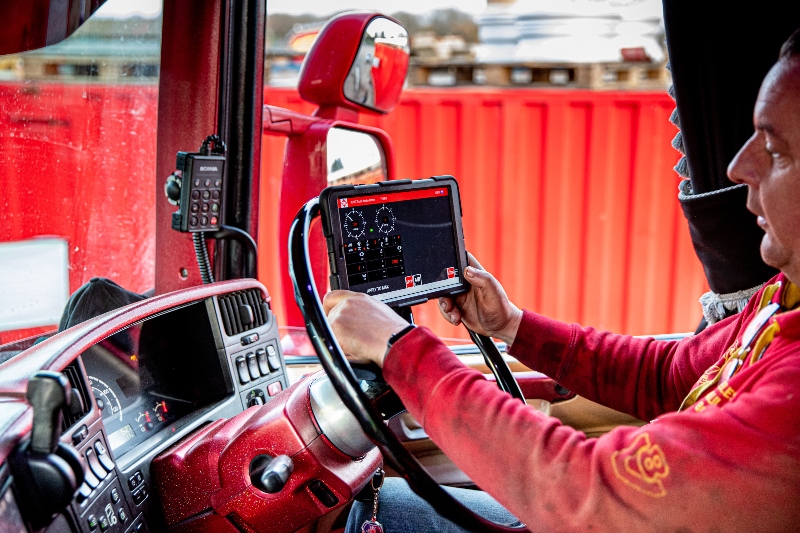Steve Braund, marketing manager, Totalkare makes the case for in-house testing in vehicle workshops.


Vehicle workshops, be they in the public or private sector, all face similar challenges around productivity and economising effectively. How can we do more with the same (or perhaps less) budgetary spend available?
Many commercial workshops have been examining the costs associated with the outsourcing of their vehicle testing, recognising the value of bringing things like brake, headlamp and emissions testing in-house. But there is more than just a fiscal benefit to making such a move. Doing so can offset a considerable amount of fuel, while the time saved can free up personnel to work on other tasks.
Let’s look at the benefits more closely.
Stop paying per test
Depending on the size of your fleet, the cost of routine brake testing each vehicle soon adds up. Investing in an in-house brake tester eradicates those costs, and you might be surprised how quickly you can break even too.
Fault diagnosis and guaranteeing quality workmanship
Testing in-house can save considerable time (see below). A by-product of this is that it will help drive quality. For instance, let’s say that you’ve brake tested a vehicle and the test has failed. The brakes then get inspected and adjusted before being re-tested. What if it fails again? Is it a faulty part? Has the mechanic done a good enough job inspecting and adjusting things? Testing in-house helps to get answers to these questions quicker…and without those annoying re-test fees!
Save time
Let’s say you currently outsource the brake testing of your fleet. Every time a vehicle is taken to be tested, the vehicle and the driver are both unavailable to you. The time taken to drive the vehicle to a test centre is time the vehicle and driver could be on the road.
What’s more, brake testers of the past used to require two engineers to conduct a test – one to sit in the vehicle and run through the test and one to view results on a large analogue display and shout instructions to the person behind the wheel.
These days, with a tablet which connects to the brake tester’s computer via wi-fi, tests can be conducted by one person from the comfort of the driver’s cab. Simple!
Save fuel
We all know how quickly the costs of fuel can add up. And if you’re running a fleet of vehicles, those costs get multiplied for every vehicle that’s out on the road.
You might be looking at a 20-mile round trip to the nearest test centre – which doesn’t sound too bad on its own. But when that 20-mile trip gets multiplied by 50 vehicles travelling for four tests per year, that’s a whopping 4,000 miles of fuel (and taxpayer money) wasted each year.
Luckily, there’s a simple solution for any fleet operator that wants to be more efficient: you can cut out those unnecessary trips by bringing your testing in-house. With an in-house Brake Tester, Headlamp Tester, and Emissions Tester, you can get the essential testing your fleet needs whenever you want it – without the huge costs of needless extra mileage.
That covers the financial side of things. But the reality is that bringing your testing in-house is actually a double dip in terms of benefits: every gallon of fuel saved is a reduction in costs, but it’s also a reduction in your carbon footprint.
Test several things at once
So you’ve invested in a brake tester for your workshop and are already seeing the impact of those time and cost savings we talked about earlier. But could you economise further? Of course you can!
The vehicle is already on the brake tester, so why not test things like headlamp aim or its diesel smoke emissions while the vehicle is in position? In just a couple of minutes, you’ve not only got a record of a brake test having been conducted, but the headlamp beam aim has been adjusted and you’ve checked the vehicle’s exhaust emissions are within the legal limits.
Why stop there? Why not check the vehicle’s alignment while it’s in the workshop? The number of miles each year lost due to wheels being out of alignment is staggering, and you’re paying for that in additional fuel you needn’t be consuming.
When these additional checks can be conducted in a matter of a few minutes, why wouldn’t you do them in-house?
MTS connectivity
Like it or loathe it, the world is becoming an increasingly digital place. And DVSA changes, which became law in October last year, state that MOT stations making new site applications or replacing older brake testers must purchase connected test equipment that can interface with the MOT Test System (MTS).
The advantages of connected equipment are many, but in short, they dramatically reduce the likelihood of data entry errors and facilitate even quicker testing, cutting out some of the associated administration work. What’s not to like about that?
Attracting staff
As the saying goes, variety is the spice of life. Increasing the variety of work undertaken in-house makes the company or council more attractive to job applicants when you’re recruiting – a good way to ensure you hire the best people. Similarly, it can have a positive impact on staff attrition rates and reduced turnover of staff equates to a settled, stable, and productive workforce.
So how much could you save?
The time savings of bringing your brake testing in-house are instant and will be felt immediately. But the financial aspect is key when weighing up a capital investment, and that’s why we’ve created our brake test savings calculator. Just enter the number of vehicles in the fleet and the number of tests each vehicle requires each year. The calculator will not only tell you when you’ll breakeven but give you figures over a 10-year period demonstrating the full extent of what you’d stand to save.